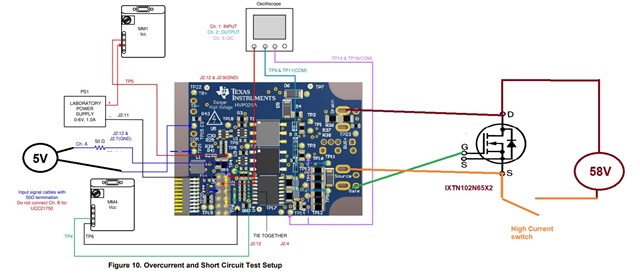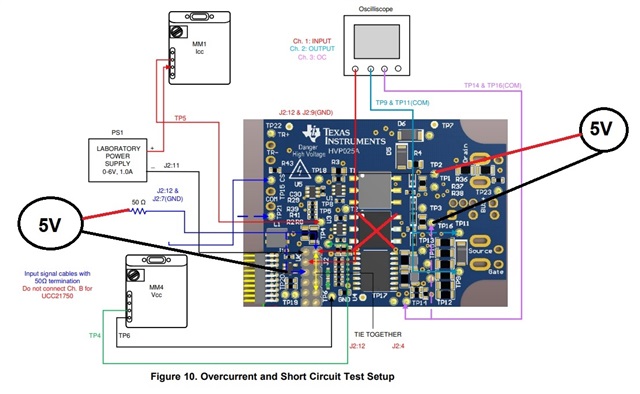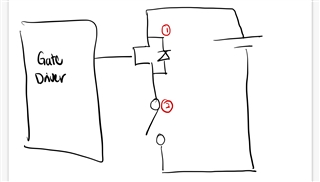Other Parts Discussed in Thread: UCC21750
Hi ,
We are developing application to detect short circuit for lithium battery, to cut off the MOSFET immediately in event of short circuit. The MOSFET we are using is the IXTN102N65X2 with 30 mOhms of Rds On - Drain-Source Resistance.
As shown in the circuit below, we follow the short circuit sluubx2b.pdf instructions but replace the Function gen with a fix 5V source at channel A to turn on the MOSFET (voltage measure across the gate and source is 17V). We use high current SW to simulate short circuit, but the moment the SW is turn on, the MOSFET blown up and the UCC21750 chip damage. The Rdy LED turn off but the FLT Led remain on, the voltage across the gate and source remain at 15V, even with the 5V at channel A remove.
We remove the UCC21750 but replace with UCC21756, voltage measure across the gate and source become -0.5V. Measure the voltage across COM and VEE is 0.5V. Remove the UCC21756 and measure the COM and VEE is around 4.5V, solder another UCC21756 and the COM and VEE become -0.5V. Not sure if other components could have have damage
Hope to get some advise how we can solve these issues. Thank you
Rgds,
YK





